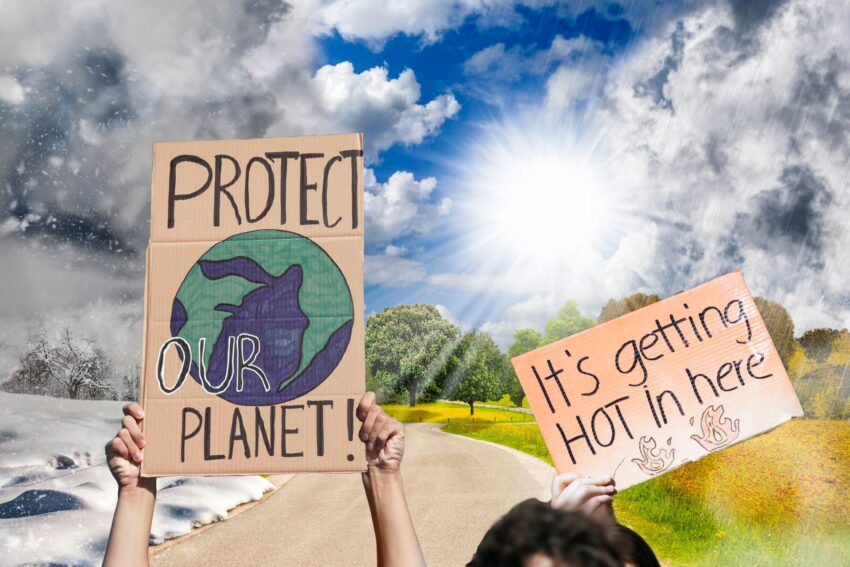While discussions about “climate change” are all the rage these days, the biggest factor in our changing climate, the sun, is almost always left out of the picture. The real “inconvenient truth” for climate cash-grabbers and political pundits is that solar cycles have far more impact on the climate of our world than emissions ever could.
A solar cycle, also known as the solar magnetic activity cycle, is a periodic 11-year change in the Sun’s activity measured in terms of variations in the number of observed sunspots on the solar surface. During a solar cycle, the Sun’s magnetic field flips, meaning the north and south poles switch places. This cycle affects space weather, which in turn can impact Earth’s atmosphere and technological systems.
Now, you might be thinking, “What does this have to do with the weather on Earth?” Well, my dear reader, the sun’s activity has a direct impact on our planet’s climate. The sun, as the primary source of energy for Earth’s climate system, plays a crucial role in the planet’s temperature changes. When the sun is more active, it emits more energy, which can lead to warmer temperatures. Conversely, when the sun is less active, it emits less energy, which can lead to cooler temperatures.
In addition to the 11-year solar cycle, there are shorter and longer cycles. The 22-year magnetic cycle, for example, is the time it takes for the Sun’s magnetic field to return to its original state. There are also other, longer cycles that have been proposed, such as an 87-year cycle, a 210-year cycle, and even a 1,000-year cycle.
There is also a grand solar minimum, a period in the solar cycle when the sun’s activity decreases significantly. During this time, the sun experiences fewer sunspots and solar flares, resulting in less solar radiation reaching Earth. This can lead to a cooling effect on Earth’s climate.
The most recent grand solar minimum, known as the Maunder Minimum, is believed to have occurred between 1645 and 1715. This coincided with a period of lower-than-average global temperatures known as the Little Ice Age, greatly affecting Europe and North America. Besides changes in the Sun’s activity, changes in oceanic circulation and volcanic activity could have played a part. The cooler temperatures had a significant impact on agriculture and quality of life, with crop failures and famine becoming more common.
Solar cycle dittos. Your post is on target. The media works hard to ignore this, but the sun's Bray and Eddy solar cycles clearly align with past climatic changes, while CO2's impact is trivial. https://t.co/7NjhDf61YT pic.twitter.com/XHQfR8ipJ3
— John Shewchuk (@_ClimateCraze) July 22, 2023
Fast forward to the 1970s, and the climate hysteria was all about the coming ice age. Scientists were worried that the Earth was entering a period of global cooling, which could have devastating consequences for humanity. However, all the climate scientists now talk about how temperatures have been increasing, and the focus has shifted to the potential impacts of a warming planet and how it’s all man’s fault for living, working, and even just breathing.
Climate scientists have been focusing heavily on the role of CO2 in climate change, often overlooking the significant impact of solar cycles and solar activity. They deliberately neglect the significant influence of solar activity to justify massive budgets to fight “climate change” and mandate changes in the way humans live and do business. This oversight could lead to a skewed understanding of climate, potentially misguiding efforts to mitigate its effects.
Impact of the ~2400 yr solar cycle on climate & human societies The role of solar variability on climate change…is currently downplayed as a climatic factor within the most popular hypothesis for climate change. https://t.co/YYnFe88IXU pic.twitter.com/ivTY5jgTGs
— A Devoted Yogi (@ADevotedYogi) March 1, 2023
Even the rise in CO2 levels can be attributed to solar cycles instead of human actions. Note: we have recently covered how increases in CO2 are good for agriculture and all plant life!
What is causing the increase in atmospheric CO2? NOAA’s article on Glacial-Interglacial Cycles suggests that recent increases in CO2 and temperatures are due primarily to cyclic changes of solar radiation associated with the Earth’s orbit around the sun https://t.co/aN65NZeLmc
— Alix (@AlixG_2) June 11, 2023
Here’s the thing: we should be more worried about a cooling planet than a warm one. While a warmer planet could lead to a slight rise in sea levels (Al Gore’s polar bears haven’t lost their home just yet) and perhaps an increase in extreme weather events, a cooler planet can have even more dire consequences. Cooling temperatures would lead to shorter growing seasons and reduced crop yields, making it harder to feed a growing global population, resulting in mass famines. Additionally, cooling would increase the demand for heating energy, straining energy resources and potentially leading to shortages. This could have severe economic consequences and exacerbate energy poverty in many regions, causing mass migrations of people from colder regions to warmer ones. In contrast, while global warming presents its own set of challenges, it also brings longer growing seasons and the potential for increased crop yields in many areas.
Do you think the people who lived in Europe during the Little Ice Age, hungry and shivering under a blanket of snow and ice, would have considered “global warming” to be a cause for concern? So, the next time you hear someone talking about the dangers of global warming, remember that the sun has been going through cycles for millions of years, and that a cooling planet is something we should be more concerned about.


